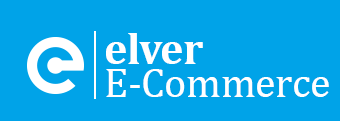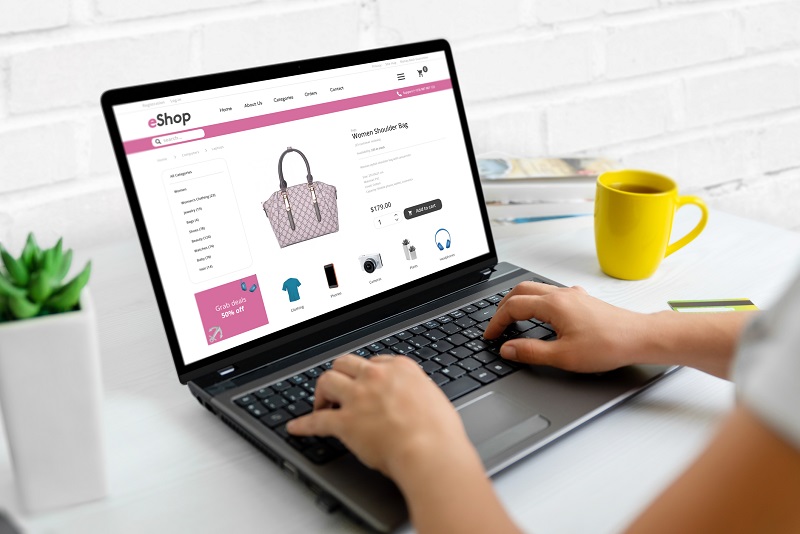You will find lots of websites offering advice on starting up your own e-commerce business and how easy it is. And it is…….create a website using a platform like Shopify, select payment methods from the options available and use dropshipping to source the products (dropshipping is where a supplier will pick, pack & deliver goods that you have sold through your website direct to the customer. If you are using a dropshipper, you are able to sell products on the internet, without the need to hold stock or handle the products you are selling). Starting with dropshipping means you need little initial investment, and you can spend time experimenting with products and marketing. You will read or hear about (there are plenty of YouTube videos on the subject) how to make £1000s of product sales, but the trick is to create a successful and profitable online business. The vast majority of dropshipping sellers fail. Arbitrage is similar to dropshipping in that you look for products that are selling for more in one marketplace compared to another. You then undercut the product on the higher selling marketplace and fulfil the order by ordering from the lower priced marketplace with delivery direct to your customer. Using dropshipping or arbitrage has a number of drawbacks:
- Low margins
- Your product will not be unique, so how will you market it?
- Less control over order fulfilment
- Less control over customer service
- Multiple deliveries for one order if products comes from several dropshippers
If your margins are low, you will need to sell a lot of product to make any money, which means your marketing efforts and skills will be critical, because your marketing budget will have to be low. No-one is going to find your newly created website without some investment in SEO or paid advertising and a social media marketing strategy will not result in immediate rewards. It is not a get rich quick scheme. Both dropshipping and arbitrage are however good for experimenting with new products before you commit to large inventory purchases. A lot of dropshippers used to rely on selling low value product at low margin and high volume as they took advantage of VAT rules that meant they could avoid charging VAT, even on £millions of turnover. With new VAT rules in place those days are gone.
You don’t necessarily even need your own website in order to start an ecommerce business, as you can sell on marketplacess such as Amazon, Ebay, Fruugo and Etsy (for handcrafted, vintage or unique products only) and a whole host of others. Walmart has now also opened its store to non USA sellers. Using a marketplace does have a lot of attractions in that your products may be found more easily by customers that will search those marketplaces, but the marketplace will of course take a fee for this.
And there are a whole host of other possible considerations to running an online business (the links below will take you to more detailed information):
- Card fraud
- Refund policy
- Consumer Contracts Regulations and Distance Selling Regulations
- Tax compliance (VAT, corporation tax (for companies) and income tax (for sole traders and partnerships)
- Marketing your website
- General Data Protection Regulation (“GDPR”)
- Bookkeeping and effective management information
- Employing people (employment law, payroll/PAYE, and auto enrolment)
- Website security
Launching straight into starting your store without considering these issues is going to a recipe for failure.
If you are not using dropshipping or arbitrage and have your own product or service, then margins will be higher, but that brings with it a whole host of other considerations as you will have direct control over customer service. Your product may be manufactured by a third party, or you may have your own production facilities. You will need to hold inventory and you will need to deliver it to the end customer. Alternatively you may use dropshipping to complement your own products or services.
Before you can start selling products online you need a product or service to sell. This can be a challenge in itself. You may have had that eureka moment and know exactly what it is you will sell, but if not, you will be searching for ideas. You can seek to solve pain points and being aware of these or other annoyances in everyday life can help to spark an idea into life. Another avenue to market is to target enthusiasts. Find a niche. Many people are passionate about their hobby and are more inclined to pay for goods or services to get exactly what they want. Think of your own hobbies and interests. What products and services would you like to see available or improved? Targeting an enthusiastic audience can help to create brand loyalty and engagement with your audience.
Recognising a trend early will always get you one step ahead of the game, if you are able to establish yourself in that market before the competition. There are however plenty of examples of online businesses that have been very successful on the back of a fad, that have then petered out because they relied heavily on that one fad product.
Another research technique is to read reviews of existing products, to see what customers think can be improved upon, or it may just inspire you to come up with a new innovation.
Some sellers are successful selling a whole range of unrelated products. You don’t have to be passionate about your product, just passionate about business and making money!
Launching Your E-commerce Store
There are many popular platforms that you can build your website on to make that first sale and beyond. Amongst small and medium sized businesses Shopify is by far the most popular. All platforms will charge a fee, although card payment processing fees are usually more significant that selling fees. Most platforms will have their own integrated payment solution and paypal is usually offered as an additional payment type. But you can always add additional payment processors. This will complicate your accounting as you will have multiple payment streams and many payment processing sites leave a lot to be desired in terms of reporting and data to enable your sales receipts to be reconciled in your accounting system.
The advantage of using a platform like Shopify is that you don’t need any coding knowledge. At the other end of the scale is Magento. With Magento you have near total control over how your site looks and behaves. That degree of control comes with a price – in terms of platform fees and the skill and expertise required to develop and maintain the site. For a typical small to medium sized e-commerce business the cheaper options are usually best and perfectly adequate.
Other popular e-commerce platforms include WooCommerce, EKM, and Big Commerce. WooCommerce is free and built on WordPress, but it does require more technical knowledge to set up. There are many plug ins and theme, but many of these have a cost (which negates the fact that the platform is free to use). There is no integrated payment gateway, so you will have to use a third party. EKM was the first United Kingdom based platform and very similar to Shopify. BigCommerce is also easy to set up,and although there are no selling fees, this is because costs are based on sales volumes. many themes have an extra cost.
Your objective should be to develop a strong brand identity that resonates with your target market. Create a professional website that is easy to navigate, visually appealing, and mobile-friendly.
Marketplaces
There are many marketplaces on which to sell your product and some that are specific to regions or territories. You will benefit from the marketplace’s visibility on search engines and its reputation, and you will certainly find customers that wouldn’t otherwise have found your website. You may start just on Amazon and then expand out to further marketplaces and create your own Shopify store later on. Many successful businesses are Amazon only, but this can be a risky strategy. There are many horror stories of sellers being suspended for all sorts of reasons, often outside their control, and frustrating experiences of resolving the issue. Imagine if this is your sole source of income and it disappears overnight. Having a multichannel strategy spread risk but also provides for more selling opportunities. Marketplaces will all charge a selling fee. If you are using Amazon fulfilment options there will be further fees, and can also add further cost by using Amazon advertising to improve your visibility on Amazon.
Sourcing and ecommerce product ideas
A good deal of e-commerce business source their products from China, whether through marketplaces like Alibaba (where you can also find wholesalers) or AliExpress for dropshipping or manufacturers. A manufacturer can be chosen to either produce private label, which means you have control over the product, packaging, labelling or white label, which means the manufacturer has a generic product but puts your branding on it. In terms of building a brand and a scaleable and saleable business private label is the way to go. Looking at the available products within your niche on offer, this will give you an idea about which is the most viable.
Assessing the competition
For an e-commerce business checking out the competition is relatively easy and this will also help to generate ideas for your own business, from how to structure your website to making the checkout process as frictionless as possible. Reading their customer feedback is really useful to learn about what customers are looking for – what attracts them and what turns them off.
Identifying Your Audience
Knowing the age, interests and needs of your target market allows you to develop a communications strategy that resonates with them on a personal level. For example, if you are selling golf balls, the majority or players may fall within the 30 to 60 age range, who need income to pay their bills and are interested in improving their golfing game. Your marketing communications could then experiment with using popular music from their youth, combined with content on how gold allows you to relax after work, to rejuvenate and be more productive the following day. The practice they will get in with your superior golf ball technology will allow for an improved skill-set over the long-term.
The e-commerce business plan
If you are trying to raise funds or trying to attract partners you will need a business plan. Regardless of that it’s often useful to document your plan, so that you can fine tune your plans and get all your ideas documented. It will help you to step back and think objectively about the key elements. It will help to inform your decision making as you move forward. The plan should set out your history to date, even for a start up, where you will focus more on your own personal (and those of your business partners) industry background and knowledge. Describe your product, what problem it solves, how it differentiates from the competition.Your plan should be concise, clear, and focused on the key elements of your business. You can use templates and examples to guide you in writing a business plan.
Choosing an e-commerce business name and creating a logo
Choosing a business name is an important decision that can have a significant impact on the success of your business. Here are some tips on how to choose a business name:
- Keep it simple and easy to remember: Choose a name that is easy to spell, pronounce, and remember. Avoid complicated or difficult-to-spell words.
- Make it unique: Your business name should stand out from your competitors. It should be unique and not be confused with another company.
- Reflect your brand: Choose a name that reflects the personality and values of your brand. The name should convey what your business is about and what you offer.
- Check availability: Before you finalize a name, make sure it is not already in use by another company. You can check the availability of business names through the government trademark database or a quick Google search.
- Consider the future: Choose a name that can grow with your business. Avoid names that are too specific or narrow in focus as your business may expand into other areas.
- Get feedback: Ask friends, family, or colleagues for feedback on your chosen name. Get their opinion on whether the name is memorable and easy to understand.
Remember that your business name is an essential aspect of your brand identity when you run a business. Take the time to choose a name that represents your business and appeals to your target audience.
Structuring your e-commerce business
Some businesses do start as sole traders and may convert to a limited company later on. A sole trade structure is less complicated and cheaper to run. However there are several advantages to setting up a limited company over operating as a sole trader:
- Limited liability: One of the main advantages of setting up a limited company is that the shareholders’ liability is limited to the amount they have invested in the company. This means that if the company incurs debts or legal liabilities, the shareholders’ personal assets are protected.
- Tax efficiency: Limited companies are often more tax-efficient than sole traders.
- Credibility: Limited companies are often perceived as more credible and professional than sole traders. Having a limited company can give customers, suppliers, and lenders more confidence in your business.
- Easier to raise finance: Limited companies can issue shares to raise capital, making it easier to raise finance for expansion or investment in the business. It can also be easier to secure loans and credit facilities as a limited company compared to a sole trader.
- Continuity: A limited company is a separate legal entity from its shareholders, so the business can continue to exist even if the shareholders change or leave the company.
- Reduced personal risk: As a sole trader, you have unlimited personal liability for the debts of your business, which can put your personal assets at risk. In contrast, setting up a limited company limits the personal risk to the amount invested in the company.
Overall, setting up a limited company offers several advantages over operating as a sole trader, including reduced personal risk, tax efficiency, and increased credibility and financial flexibility. However, the decision to set up a limited company should be based on your individual circumstances and needs, so it’s important to seek professional advice before making a decision.
Shipping strategy
Choosing the right shipping strategy for your online store is crucial to providing an excellent customer experience while also maximizing profitability. Here are some factors to consider when selecting a shipping strategy for your online store:
- Product type and size: The type and size of your products will impact your shipping strategy. Consider whether your products are fragile or require special handling, as well as their weight and size.
- Shipping destinations: Determine where you will be shipping your products and research the shipping rates for each location. You may need to charge different rates for domestic and international shipping.
- Shipping costs: Consider the cost of shipping and how it will impact your profitability. Look for ways to reduce shipping costs, such as negotiating better rates with carriers, offering free shipping for certain order amounts, or charging customers for shipping.
- Shipping time: Determine how quickly you can ship your products and communicate this clearly to your customers. Consider offering expedited shipping options for customers who need their products quickly.
- Shipping carrier: Choose a reliable shipping carrier that offers competitive rates and a range of shipping options. Popular shipping carriers include UPS, FedEx, and USPS.
- Packaging: Choose the right packaging to protect your products during shipping. Consider the weight and size of your products when selecting packaging materials.
- Returns and exchanges: Determine your policy for returns and exchanges and communicate this clearly to your customers. Consider who will be responsible for the cost of return shipping.
Ultimately, the right shipping strategy for your online store will depend on your business needs and goals. Consider these factors carefully and test different strategies to determine what works best for your business and customers.
Launching your business
Learning about how to start an online business to sell products requires careful planning and execution. You have selected your products, your website platform and marketplaces. But there are further important steps before launching. You will need to create high-quality content: Develop content that showcases your products and provides value to your customers. This includes product descriptions, images, videos, and blog posts. Your marketing campaigns to drive traffic to your website and generate sales. This includes search engine optimization (SEO), social media marketing, email marketing, and paid advertising.
Launching an e-commerce store requires time and effort, but with the right strategy and execution, it can be a profitable and rewarding venture. Be sure to plan carefully, execute effectively, and continuously optimize your strategies for success.
Do You Need An Accountant?
Starting a new ecommerce business can be an exciting and rewarding venture, but it also comes with a lot of financial responsibilities. One of the most important decisions you can make as a new business owner is hiring an accountant. An accountant can help you stay on top of your finances, keep track of your expenses and income, and ensure that you are meeting all of your tax obligations. They can also provide you with valuable advice on financial planning, budgeting, and forecasting to help your business grow and succeed. With so much to manage in a new business, hiring an accountant is a smart investment that can help you focus on what you do best – growing your ecommerce business.




